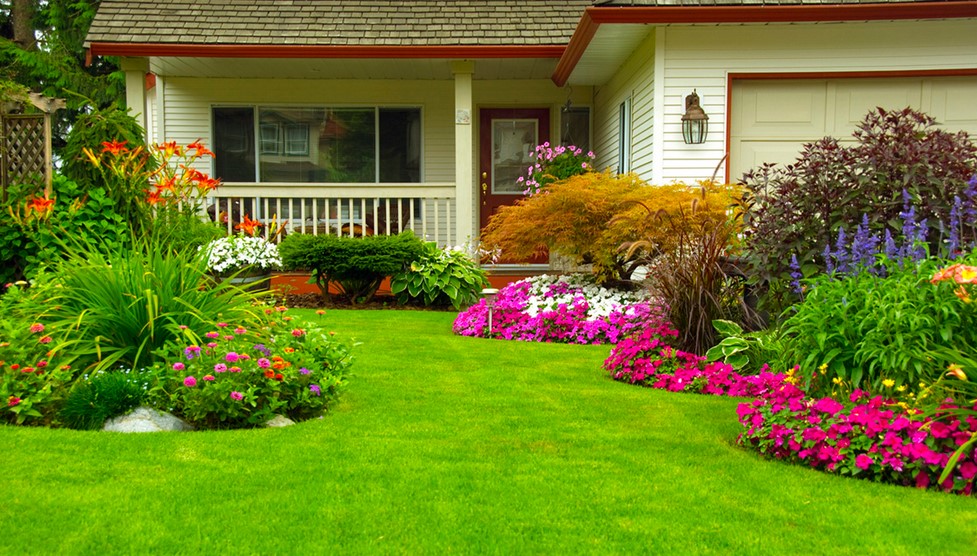
A beautiful lush green lawn offers a comfortable place to play, entertain friends and family, or just lounge. Regular maintenance, including proper mowing, watering, and fertilization, is vital to keeping your grass healthy. If you have bare patches, thin areas, or moss in your yard, you can quickly remedy the problem with overseeding.
Fertilize Regularly
Like people, plants need a complex mix of nutrients to function at their best. Grass pulls most of these chemicals from the soil through its roots, so it’s essential to replenish these nutrients regularly with a quality fertilizer. Proper fertilization helps your lawn look its best and can reduce the amount of water and weed-control chemicals you need. Choose a slow-release fertilizer from the garden center that will release nutrients over time to help your grass thrive.
Homeowners can apply granular fertilizer using a spreader, which is easy to do when you water your yard in the morning when temperatures and wind are lowest. Be sure to read the label and follow the recommended dilution rates. Watering right after applying fertilizer rinses it off the grass and prevents burns.
Mow Regularly
Mowing is the most crucial lawn care activity, and a well-maintained mower can make all the difference between lush green turf and patchy bare spots. Make use of a lawn mower. If you encounter some problems with the tool, immediately call for a lawn mower repair to avoid delays in your work. Vary your mowing pattern to reduce wheel ruts and help the grass stand taller. Grass cut in the same direction each time it grows tends to lean toward that direction and may grow less thick.
Be sure to bag up your clippings. Leaving them to decompose in the soil uses up nutrients and can lead to a need for fertilizer.
Aim to water profoundly and sparingly, but often enough. The best times to water are in the early morning, before dawn, and at night, when the sun’s heat causes less evaporation. Avoid watering at mid-day, when the lawn will be limp from heat and stress.
Water Regularly
If your lawn isn’t green or thick, it may be due to a lack of water. Typically, 1 inch of rain per week is enough to keep your grass healthy, but it’s a good idea to supplement this with your irrigation if needed. Water deeply and infrequently, and avoid watering at the peak of the afternoon sun, as this can lead to wasteful evaporation and limit the amount of water the ground can absorb.
Watering early in the morning also works well, as it doesn’t evaporate as quickly and encourages profound root growth that improves drought tolerance. Watering with a hose instead of automated sprinklers can give you more control over how and when your lawn is watered. Infrequent watering can prevent soil compaction, which can impede healthy grass growth.
Remove Weeds Regularly
They can choke out grass, competing for water, nutrients, and sunlight when left unchecked. Hand pulling or using a weed-pulling tool to pull them out as they appear helps ensure you remove the entire plant so it can’t regrow. It is also a great way to look closer at your lawn and identify other problems, such as disease or pest infestations, early on. Keep toys, furniture, or a wading pool from sitting on the lawn for a short time, too, as they can crush grass blades and deprive them of the necessary nutrients. Avoid letting your lawn become too short in the summer as this exposes the roots to heat and can quickly turn it yellow. Letting it grow a little taller and regularly mowing it will help shade the roots and prevent overheating.
Keep it Clean
A lush green lawn complements your home and helps create an excellent place for family fun and relaxation. However, a healthy yard does not happen by accident and requires regular care from you and a comprehensive lawn service program.
As people enjoy the lawn, playing games, hosting friends, barbequing, and laying out on sun loungers, the soil can become compacted, strangling the roots and depriving them of nutrients and moisture. Core aeration breaks up this compaction and allows the soil to breathe.
Fertilizing is also a must. Nitrogen helps the grass stay a rich green while Phosphorus thickens the lawn and Potassium balances the pH levels (a soil test will show your acidity). A top dressing with compost also benefits clay soil by locking in moisture and adding essential nutrients.
